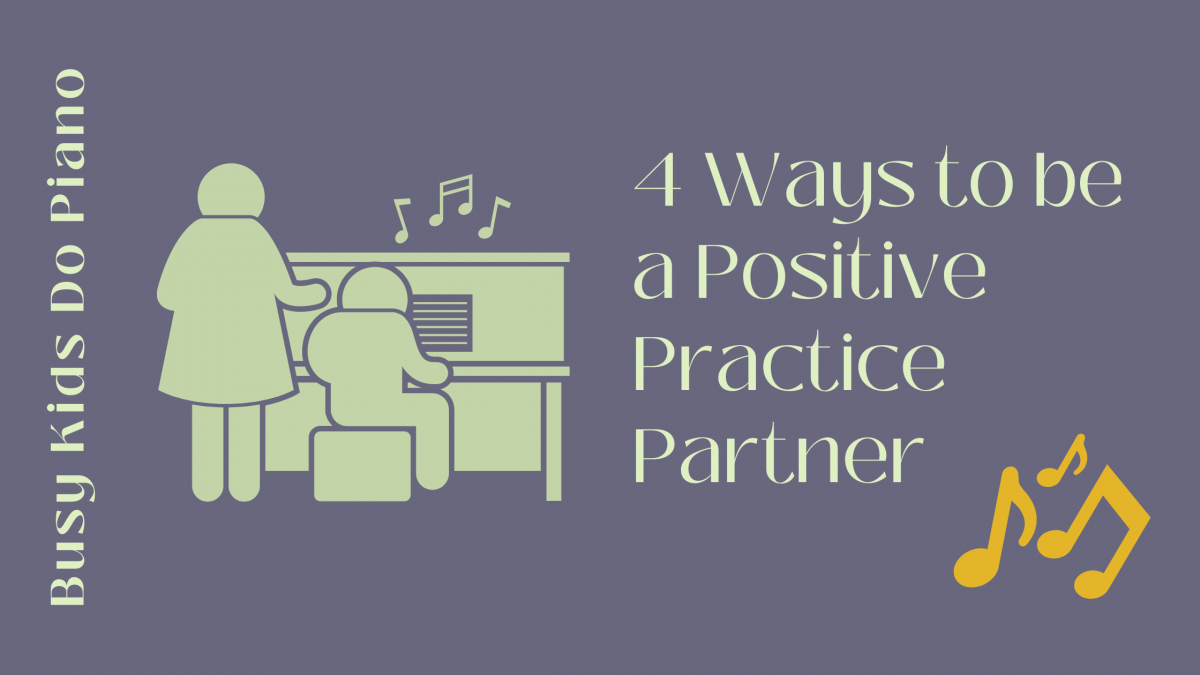Does practicing piano with your child ever feel like a slow and painful form of punishment?
Especially if you are a pianist yourself, it can be difficult to hear your child struggling through a piece without quickly “fixing” everything for her. It might also be tempting to stop every single time you hear a mistake. In a recent post, I detailed what, exactly, your role is in practicing alongside your child. It’s so important to understand how you can set up practice sessions successfully and how to structure that time together!
As vital as it is to structure those practices in a way that allow your child to learn and progress, it’s also important to build your child up and keep your relationship with your child at the center of learning. For this reason, it’s important that you keep positive encouragement at the forefront of your time together.
So what does this look like?
Praise all the good things first.
One of my own kiddos has several behavioral disorders. Every therapist that works with us always reminds us to find all the great things he is doing during the day and praise them. Sometimes it means we have to look really, really hard and say something like, “You’re doing a nice job breathing.” When we find these positive things, we build him up. This way, he isn’t just constantly being told things such as, “Stop doing that” or “You’re being so naughty.”
But truly — isn’t that a great strategy for any parent or teacher? When I’m working with a piano student, before I give feedback on things we need to work on, I always try to give really specific praise about the things he did well. Instead of starting with, “You missed the note in measure 4.” Try something like, “I really love how you used all the correct fingering,” or, “You played that so expressively!” Then dig into the things that need fixing.
Help him discover his own mistakes.
Sometimes when a student is playing a rhythm wrong or without dynamics, rather than immediately telling him what he’s doing WRONG, I’ll play the passage for him. I might say, “Does yours sound the same? How was it different?” If you are a student of an online course of mine, you’ll hear me play the piece at the end of each lesson video. This allows your student to hear the piece played correctly to see if he can hear his mistakes on his own.
Celebrate corrections.
If your child has been playing a passage incorrectly and struggling with rhythm or a chord change or playing something with zero expression, it is a BIG deal to overcome this. So be sure to make a big deal about it! Give hugs, high fives, stickers — whatever it is that lets your child know you are happy and proud of him!
Remember the end goal.
It can be easy when you are overseeing your child’s practicing to think that the goal is for him to play a piece perfectly. While certainly we want to have high expectations, we don’t want those expectations to ever rob our child of having a love for learning to play the piano.
My goal for my students is to create a lifelong love and appreciation for music. If that goal becomes lost amidst a challenging piece of music or a frustrating practice session, sometimes it’s best to step away. I’ll come back to it with fresh eyes and a positive attitude at a later time.
Want to incorporate musical learning activities into your home life? Sign up for my challenge and have free resources delivered to your inbox!




